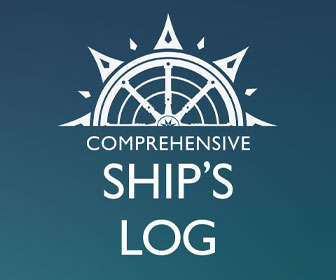Tips for Mooring in Avatiu Harbour – Rarotonga
Published 14 years ago, updated 5 years ago
Harbour Layout
A $30 million harbor realignment and dredging project has been approved and funded. Dredging is scheduled to start in late 2010. Once construction starts, available mooring space for yachts will be greatly reduced.
Although the long concrete wharf that makes up the eastern side of the harbor may look inviting to tie to, it is generally reserved for international and inter-island freighters. Sailboats are not allowed to tie up to the north (entrance) end of this wharf as their masts obstruct aircraft taking off from the nearby airport.
During cyclone season, end of November to end of March, cruisers are not permitted to use the harbor.
Yacht Mooring in Raro
Mooring in Avatiu Harbour is not easy as it’s a med-moor; bow anchor set and yachts held in place with stern lines running to shore.
The complicating factors are:
- Not much space; there is only 500’ for sea wall with the eastern end is generally kept free for local fishing vessel access.
- Cruising yachts may be poorly moored, generally with two bow anchors, frequently not set.
- Poor holding ground; some sand, some light mud with occasional lumps of broken coral.
- Wind on or just forward of the beam during normal ESE trades.
- Continual swell and wave refraction as the harbor are open to the ocean.
- You need a dinghy to access the shore as due to the continual surge it is not possible to step ashore from your boat even using a passerelle.
How to go about Mooring in the Harbour
- As you approach Rarotonga, try to contact Rarotonga Harbourmaster on Ch. 16. Rarotonga Radio monitors this frequency at all times, and can possibly relay a message.
- Hoist yellow quarantine flag.
- It is far safer to wait until daylight to enter Avatiu Harbour than trying to enter in the dark.
- Have main anchor ready to deploy.
- Entering the harbor through the reef following the two triangular range markers. Keep the green buoy to starboard.
- Once in the harbor, there is enough space to turn into the wind to drop sails.
- Assemble two stern lines of at least 150’ and 100’ on deck.
- Rig fenders to port (downwind in prevailing easterlies) side.
- Drop anchor at least three boat lengths out from where you want to end up, taking caution not to cross other boats anchors or rodes. Avoid anchoring over the top of existing anchors as prudent sailors will have set two anchors.
- If no one approaches in a dinghy from another yacht to help run your stern lines ashore launch your dinghy and run a line ashore.
- This is the tricky part for boats with only a couple aboard – ease the main anchor chain out as you winch in the stern line. If possible it is best done with the main engine off to lessen the chance of tangling the stern line or another boat’s anchor line in your prop.
- Set the second anchor, generally more to the east, from the dinghy.
- Snorkel to check anchors. The maximum depth in the harbor is 15’ through the visibility is poor.
- Bear in mind that as the harbor faces north you need to monitor the weather patterns. It is not advisable to leave your boat unattended in northerlies brought about by a frontal passage. If the harbor is crowded, you may be safer and more comfortable putting to sea.
- Ships and fishing vessels may also require that you provide turning room in the harbor so check with the harbormaster if you are planning on leaving your vessel unattended for any length of time.
- Be vigilant at all times of your lines and anchor settings.
- Be prepared to help other yachties by running and securing stern lines ashore upon their arrival.
- The harbourmaster, whose office is in the two-storied blue building adjacent to the harbor, handles customs and immigration and generally, the health and quarantine inspectors will call by if you have the quarantine flag hoisted.
Options If You Need to Vacate the Harbour
- It is possible to anchor in the lee of the island as the wind back around to the north during a frontal passage, but all of the anchorages are deep, fairly close to shore and frequently on coral and the wind may shift around in an anti-clockwise direction fairly quickly, depending on the speed of movement of the frontal passage.
- Off Arorangi Primary School (visible from seaward). On the far western edge of the island is an anchorage that has a dinghy pass through the coral. The approximate position of this anchorage is 21.13 S, 159.50 W. Published plans are to build a landing here for cruise ship tenders to land their guests during northerly conditions when it is too rough for cruise ships to anchor off Avatiu Harbour. Whether or not this happens is debatable, but this is one possible alternative for yachts in strong northerly conditions.
John Neal
John has moored here about 15 times over the past 34 years.
Related to following destinations: Cook Islands







